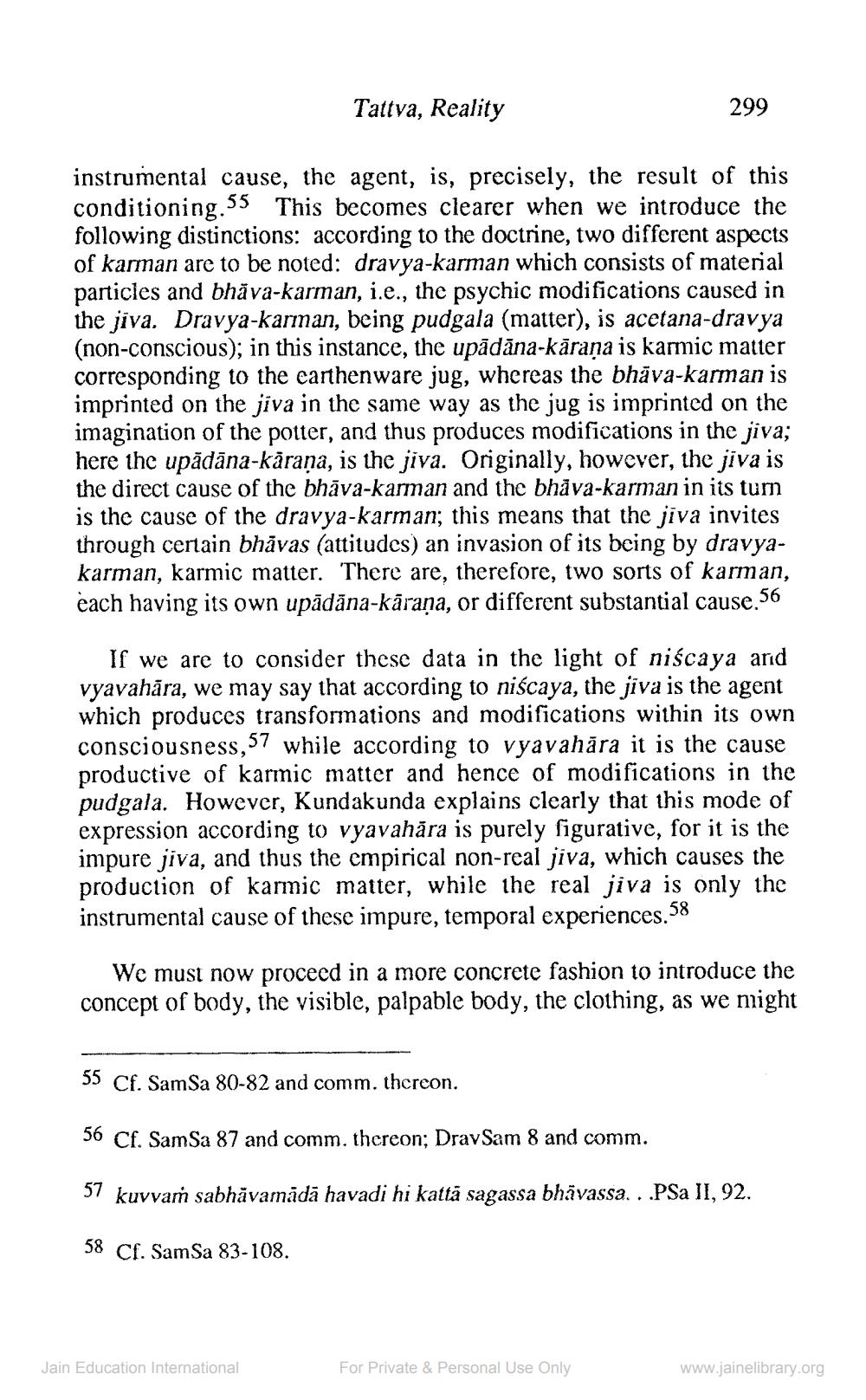________________
Tattva, Reality
instrumental cause, the agent, is, precisely, the result of this conditioning. 55 This becomes clearer when we introduce the following distinctions: according to the doctrine, two different aspects of karman are to be noted: dravya-karman which consists of material particles and bhāva-karman, i.e., the psychic modifications caused in the jiva. Dravya-karman, being pudgala (matter), is acetana-dravya (non-conscious); in this instance, the upādāna-kāraṇa is karmic matter corresponding to the earthenware jug, whereas the bhava-karman is imprinted on the jiva in the same way as the jug is imprinted on the imagination of the potter, and thus produces modifications in the jiva; here the upādāna-kāraṇa, is the jīva. Originally, however, the jiva is the direct cause of the bhava-karman and the bhava-karman in its turn is the cause of the dravya-karman; this means that the jiva invites through certain bhāvas (attitudes) an invasion of its being by dravyakarman, karmic matter. There are, therefore, two sorts of karman, each having its own upādāna-kāraṇa, or different substantial cause.56
If we are to consider these data in the light of niscaya and vyavahāra, we may say that according to niscaya, the jiva is the agent which produces transformations and modifications within its own consciousness,57 while according to vyavahāra it is the cause productive of karmic matter and hence of modifications in the pudgala. However, Kundakunda explains clearly that this mode of expression according to vyavahāra is purely figurative, for it is the impure jiva, and thus the empirical non-real jiva, which causes the production of karmic matter, while the real jiva is only the instrumental cause of these impure, temporal experiences. 58
299
We must now proceed in a more concrete fashion to introduce the concept of body, the visible, palpable body, the clothing, as we might
55 Cf. SamSa 80-82 and comm. thereon.
56 Cf. SamSa 87 and comm. thereon; Drav Sam 8 and comm.
57 kuvvam sabhävamādā havadi hi kattā sagassa bhävassa. . .PSa II, 92.
58 Cf. SamSa 83-108.
Jain Education International
For Private & Personal Use Only
www.jainelibrary.org




